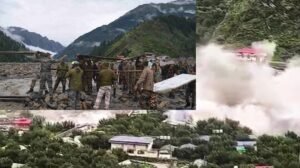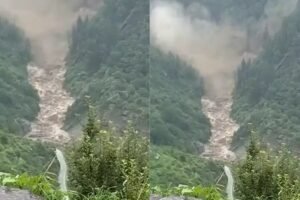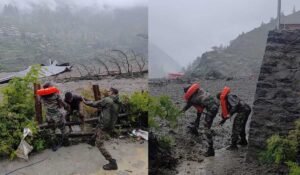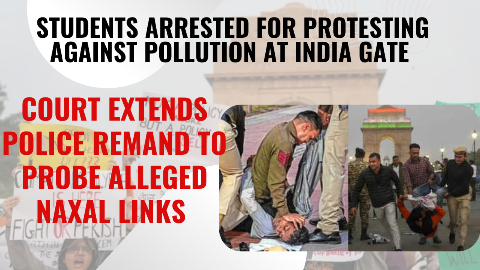The recent landslides and floods in Uttarkashi district of Uttarakhand have once again exposed the deep-rooted environmental imbalance and administrative apathy that plague the region. After days of heavy rainfall, large-scale destruction has gripped several villages—homes have collapsed, roads have been severed, and many people are missing. Relief and rescue operations remain slow and inadequate, raising serious concerns about disaster preparedness.
This tragedy is not the result of a sudden cloudburst, as is often claimed. The real cause lies in years of unchecked deforestation, rampant hill-cutting, and unscientific construction across the fragile Himalayan terrain. In such an ecologically sensitive region, even moderate rainfall now leads to devastating consequences.
This is not an isolated incident. The 2013 Kedarnath tragedy stands as a stark reminder of the same man-made causes—massive deforestation, ignored environmental warnings, and reckless infrastructure projects. A decade has passed, yet the state seems to have learned little.
Both central and state governments often promise “Green Uttarakhand” and “Sustainable Tourism,” but the ground reality tells a different story. Construction mafias and so-called development projects have hollowed out the hills. Road-widening for highways and the Char Dham pilgrimage route have moved forward with little regard for environmental impact assessments.


Ironically, Uttarakhand has been the birthplace of iconic environmental movements such as the Chipko Movement and the Save Ganga campaign. Environmentalists like Sunderlal Bahuguna once brought global attention to the importance of preserving the Himalayas. But today, that same land cries out for help, while those in power remain largely silent.
The Uttarkashi disaster is not just a regional incident—it is a warning to the entire nation. If urgent and sincere steps are not taken to protect our environment, such calamities will become more frequent and deadlier. The government must move beyond hollow statements and take concrete preventive action. Alongside immediate rescue and rehabilitation, a long-term policy is needed—one that emphasizes forest protection, restricts unsustainable construction, and involves local communities in planning and conservation.











Leave a Reply